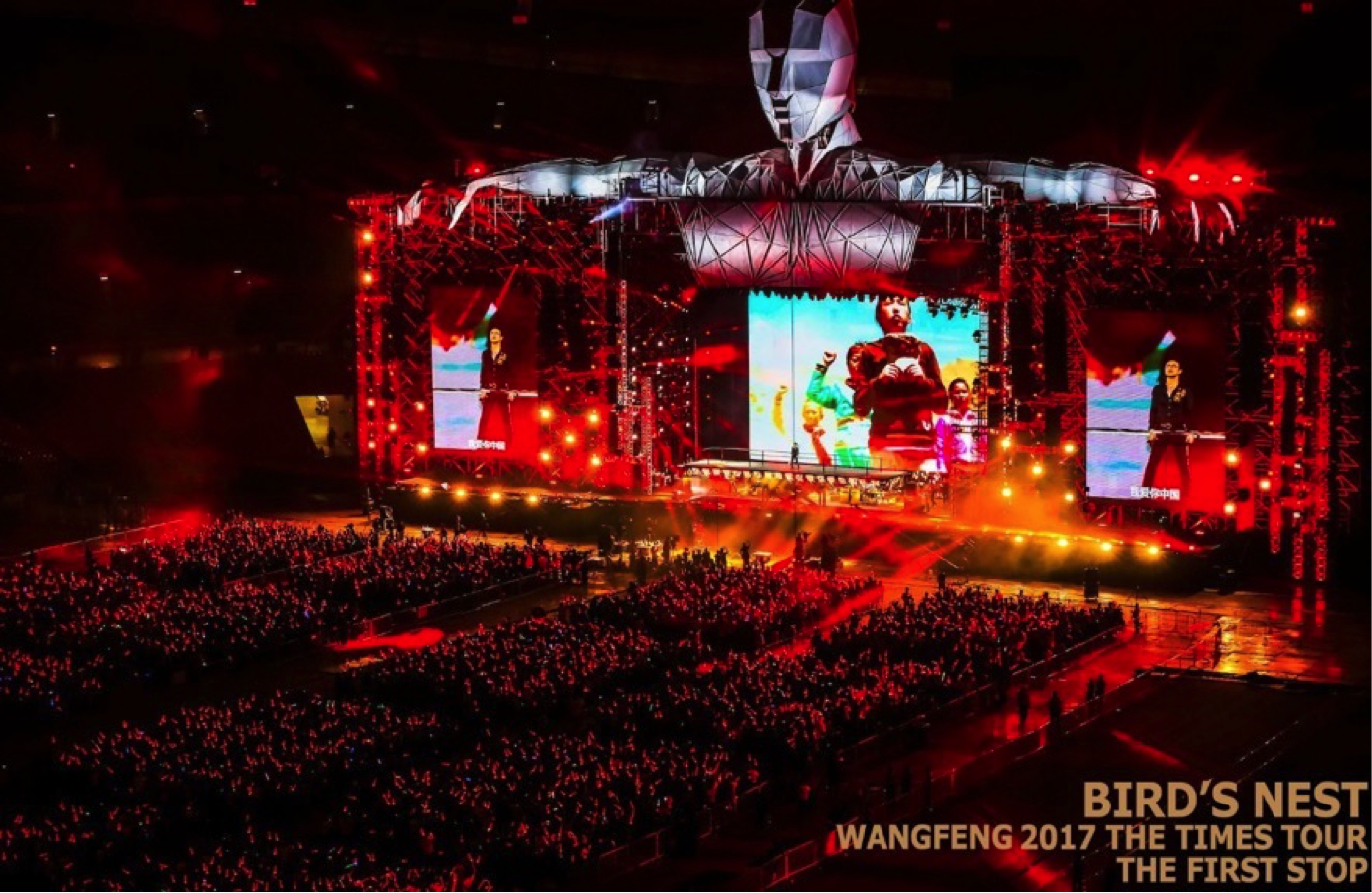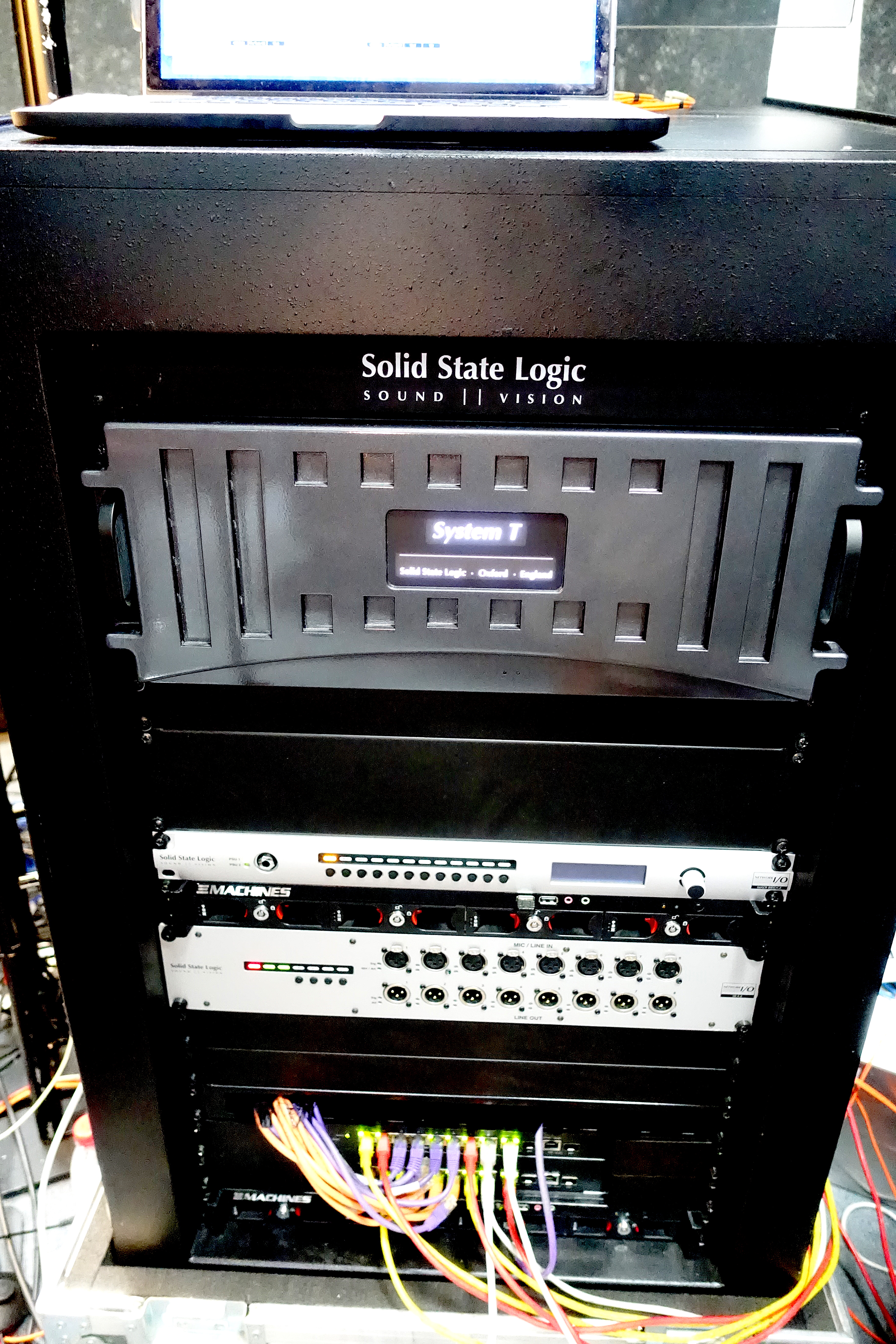Product News
2017/09/12
Wang Feng 2017 ‘The Times’ tour at the Bird’s Nest Stadium
Solid State Logic System-T, a fully networked broadcast console
First Dolby Atmos Live Streaming was a huge success

Top Chinese singer Wang Feng’s 2017 tour ‘The Times’ had its opening show at the Bird’s Nest Stadium in Beijing. The singer, famous for his powerful rock music singing, put on one of the most anticipated live music events of 2017. To cater the needs for online spectators, the team decided to broadcast the whole concert on the internet, technologies such as 4K definition, VR and Dolby Atmos were also implemented to enrich the streaming experience.
The sound engineering team consisted of the industry’s leading experts: Jin Shaogang on main PA, Shao Yong on monitoring, Li Jun on live music mix and Lou Wei on Dolby Atmos broadcasting. Dolby Lab Chief Engineer Zhang Yan and DMT Technical Advisor Wang Yufei were in charge of designing the broadcasting infrastructure. Together they formed one of the most professional audio teams in the industry in China to date.

Sound Team for the show at Bird’s Nest
The Dolby Atmos broadcasting system was the last stage of the broadcasting mix, the system needed to be designed meticulously as the programme would be viewed online by millions around China. When designing the system, the team faced a difficult challenge: the irregularity in ceiling height in the Bird Nest’s media workspaces prevented the Dolby Atmos monitoring system to be installed close to stage. The Dolby Atmos broadcasting system, requiring a 5m x 5m space with minimum 3m ceiling height, could only be installed 100m away from the stage box and the pre-mix systems. This distance would cause a lot of trouble in multitrack signal pass, and would isolate the broadcast system from the main mix and PA.
To solve the problem, the team utilised Dante network protocol to build an AoIP system. The Dante network could transmit 512 Ch @ 48K through Cat-6 network cable without relay for 100 metres which solved the problems with the distance. Moreover, Dante is supported by 400 manufactures and over 1200 products, it offered vast amount of options for system design.

SSL System-T Mixing Console
To broadcast a live music event of this size, the mixing console had to have huge processing and routing power. The console also needed to be able to control the whole Dante network and third-party Dante outboard kits. For this reason, the production team chose Solid State Logic’s System-T for the job. System T is a fully networked production environment and offers new ways to combine multiple Control Interfaces, Processor Cores and I/O devices to create previously impossible system configurations.

Processor Engine of the SSL System-T
The processor engine of System-T ‘Tempest’ deploys SSL’s patented Optimal Core Processing (OCP) software using arrayed industrial PC hardware in a controlled operating environment. Housed in a 4RU chassis, a single engine can process 800 audio paths. Paths and processing can be dynamically allocated in real time without interrupting audio. With over 3000 inputs and over 3000 outputs per engine, System T can handle any large-scale production. Tempest engines can be deployed as mirrored redundant pairs and if required each engine rack can be placed in separate fire zones. Near instant audio changeover happens via up to 6 Network I/O HC bridging cards, each providing 512 channels of inputs and 512 outputs.

First Dolby Atmos Live Streaming was a huge success

Top Chinese singer Wang Feng’s 2017 tour ‘The Times’ had its opening show at the Bird’s Nest Stadium in Beijing. The singer, famous for his powerful rock music singing, put on one of the most anticipated live music events of 2017. To cater the needs for online spectators, the team decided to broadcast the whole concert on the internet, technologies such as 4K definition, VR and Dolby Atmos were also implemented to enrich the streaming experience.
The sound engineering team consisted of the industry’s leading experts: Jin Shaogang on main PA, Shao Yong on monitoring, Li Jun on live music mix and Lou Wei on Dolby Atmos broadcasting. Dolby Lab Chief Engineer Zhang Yan and DMT Technical Advisor Wang Yufei were in charge of designing the broadcasting infrastructure. Together they formed one of the most professional audio teams in the industry in China to date.

Sound Team for the show at Bird’s Nest
The Dolby Atmos broadcasting system was the last stage of the broadcasting mix, the system needed to be designed meticulously as the programme would be viewed online by millions around China. When designing the system, the team faced a difficult challenge: the irregularity in ceiling height in the Bird Nest’s media workspaces prevented the Dolby Atmos monitoring system to be installed close to stage. The Dolby Atmos broadcasting system, requiring a 5m x 5m space with minimum 3m ceiling height, could only be installed 100m away from the stage box and the pre-mix systems. This distance would cause a lot of trouble in multitrack signal pass, and would isolate the broadcast system from the main mix and PA.
To solve the problem, the team utilised Dante network protocol to build an AoIP system. The Dante network could transmit 512 Ch @ 48K through Cat-6 network cable without relay for 100 metres which solved the problems with the distance. Moreover, Dante is supported by 400 manufactures and over 1200 products, it offered vast amount of options for system design.

SSL System-T Mixing Console
To broadcast a live music event of this size, the mixing console had to have huge processing and routing power. The console also needed to be able to control the whole Dante network and third-party Dante outboard kits. For this reason, the production team chose Solid State Logic’s System-T for the job. System T is a fully networked production environment and offers new ways to combine multiple Control Interfaces, Processor Cores and I/O devices to create previously impossible system configurations.

Processor Engine of the SSL System-T
The processor engine of System-T ‘Tempest’ deploys SSL’s patented Optimal Core Processing (OCP) software using arrayed industrial PC hardware in a controlled operating environment. Housed in a 4RU chassis, a single engine can process 800 audio paths. Paths and processing can be dynamically allocated in real time without interrupting audio. With over 3000 inputs and over 3000 outputs per engine, System T can handle any large-scale production. Tempest engines can be deployed as mirrored redundant pairs and if required each engine rack can be placed in separate fire zones. Near instant audio changeover happens via up to 6 Network I/O HC bridging cards, each providing 512 channels of inputs and 512 outputs.
